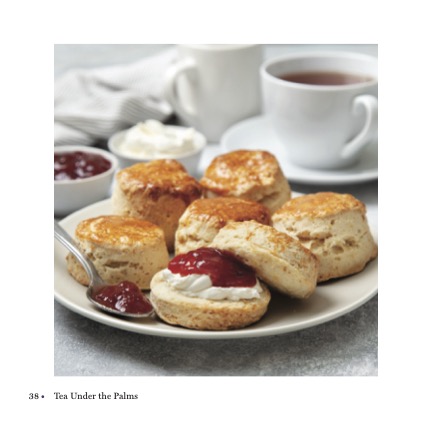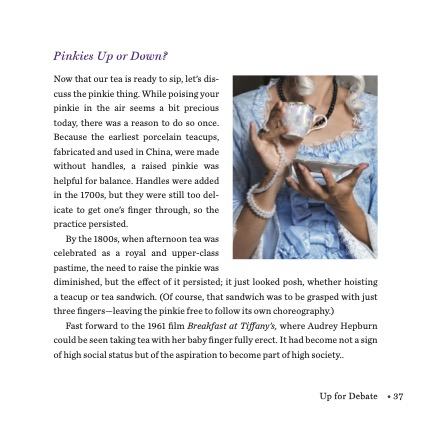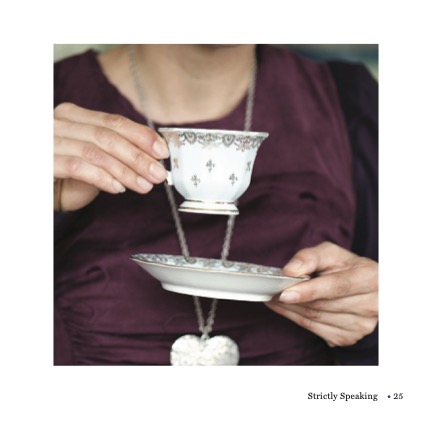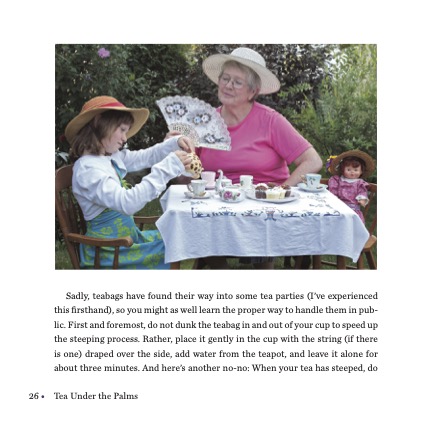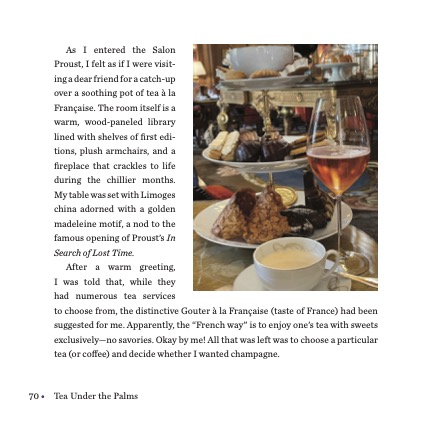This book is for every person who has ever dreamed of having formal tea with the upper classes, perhaps at Downton Abbey. The photographs of bone China cups and saucers, three-tiered plates of scones, savories, and sweets, and settings for enjoying afternoon tea’s decadence will make you swoon — a true hedonist’s delight.

Tea Under the Palms: From Leaf to Kettle, a History of Tea and the Art of a Proper Tea Party
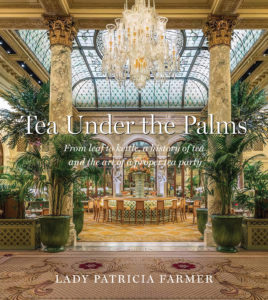 If you have ever fantasized about being invited to tea at Downton Abbey (or Buckingham Palace), this book is for you.
If you have ever fantasized about being invited to tea at Downton Abbey (or Buckingham Palace), this book is for you.
Lady Patricia Farmer has described the lush world of formal teas, in the style of the British upper classes, as exemplified by afternoon tea at her cherished Plaza Hotel in New York.
This is not a book where tea evokes a sense of serenity and meditation. It is a book about luxuriating in tea and food.
The book is also not about High Tea, to my surprise. I was raised to believe high tea was the fashionable upper-class repast served in the late afternoon, 4:00 to 6:00 pm, to stave off the hunger pangs of the rich and powerful waiting for their dinners. But I now know that high tea was actually the tea of the lower classes, who were given evening tea breaks at work because of the restorative effects of tea, and who sat on stools or chairs with high backs to drink their tea. Low tea was the tea of the upper classes, who relaxed on low couches and comfortable chairs and is now called “afternoon tea.”
So in this book, you learn how to behave at afternoon tea. And there is much to learn. How do you hold a tea sandwich? Does the clotted cream go under or over the jam on a scone (depending on whether you are in Cornwall or Devon)? What are the three tiers of a tea serving plate used for? (The bottom tier is for scones, the middle tier is for savories, and the top tier is for sweets.) Should you pour the milk into the cup before or after the tea? But there is more than just the behavior at the table. Farmer answers other questions. What is your first action when you arrive at a tea party? What do you do at the table with your purse and phone? What do you do with your napkin if you have to leave the table? What do you do with a teabag (if your host has stooped so low as to use teabags)? Should you ask for a “doggie bag”?
Although you are supposed to select your food by moving from the bottom tier to the top tier, from scones to sweets, Farmer confesses that at Restaurant Le Dali in Paris, she “vowed to start all my tea services with the dessert tier . . . life is short, right?”
And, of course, while you are concentrating on the rules for holding your cup, stirring and sipping your tea, sampling the food, and so on, you must relax and enjoy yourself.
The pictures in this book are stunning. You will soon be scrambling for your grandmother’s bone china tea cups, saucers, and sterling silver utensils (although tea food is finger food and pearl spoons are preferred for stirring tea).
As Patty Farmer, the author, has written two books on the Plaza Hotel, The Persian Room Presents and Starring the Plaza. Her mother introduced her to formal afternoon tea at the Plaza. She fulfilled a childhood dream of living like Eloise when she moved into the hotel’s eighth floor and immersed herself in its history. Farmer spent years researching the now-defunct Persian Room in the Plaza Hotel, and she interviewed many famous people who had frequented the hotel in the past.
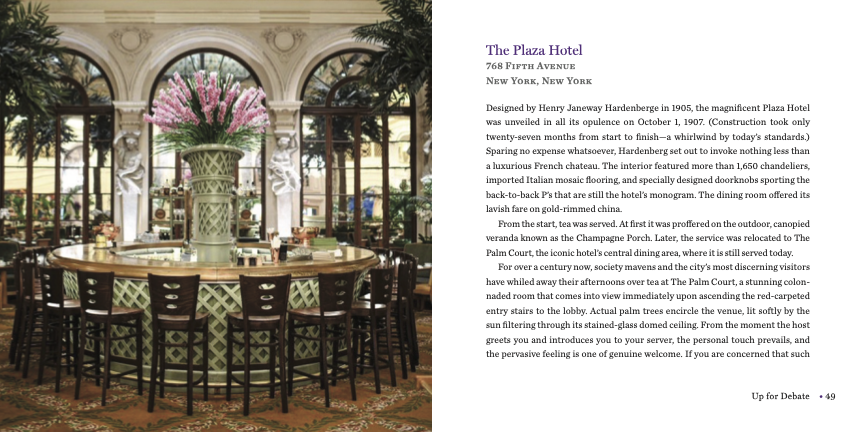
Farmer also wrote two books on the history of Playboy magazine, its association with the music scene (and the many jazz musicians who performed in Playboy Clubs) in Playboy Swing and with comedians and cartoonists in Playboy Laughs.
Her website describes her as a historian, author, speaker, formal model, and spokesperson. She has become known for her meticulous research and engaging storytelling. These skills are evident in this extremely readable and fascinating book.
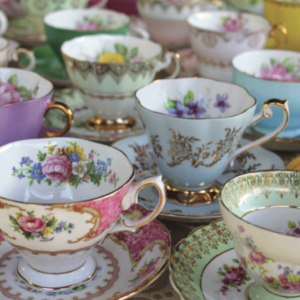 Farmer describes the history of tea, how it reached Europe, how the European desire for China’s prized tea leaves was behind the opium war between China and Britain, and how tea came to India. She also touches on other important tea topics, such as the growing, harvesting, and processing, always with interesting, colorful “teabits” of information. There’s even a short treatise on removing tea stains from tablecloths and clothing, in case you are one of those people who like to drink their tea from the saucer.
Farmer describes the history of tea, how it reached Europe, how the European desire for China’s prized tea leaves was behind the opium war between China and Britain, and how tea came to India. She also touches on other important tea topics, such as the growing, harvesting, and processing, always with interesting, colorful “teabits” of information. There’s even a short treatise on removing tea stains from tablecloths and clothing, in case you are one of those people who like to drink their tea from the saucer.
The last section of the book features recipes and pictures of food. If the recipes don’t cause you to drool, the pictures will: scones smothered in jam and clotted cream, Dundee cake, madeleines, and strawberry pavlova.
Whether you are a tea novice or a tea specialist, this book will delight the tea hedonist in you. Invite your friends and begin a tradition of afternoon tea in your neighborhood. (But get them to read the book first, so they know how to behave.)
Recipe: Banana Nutella Cake
Recipe: Smoked Salmon Sandwiches
Buy the Book
Tea Under the Palms: From Leaf to Kettle, a History of Tea and the Art of a Proper Tea Party, by Lady Patricia Farmer
Beaufort Books | $29.99 | 160 pages
April 11, 2023| Hardcover | 8 x 10 in
Ebook: $9.99
Amazon (out of stock)
